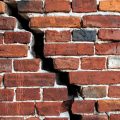
You’ve spent hours studying colour charts and finally decided on the exact hue and tone for your room. But before you buy the paint you have another decision to make. What sort of finish do you want? In Australia, paint choices range from high gloss which is super-shiny through to satin paint which has a mid-sheen finish, eggshell comes next, then finally, matte and flat paints which have little or no shine.
Your choice of finish will have as much effect on the final appearance of your new decor as the colour you choose. High sheen paints reflect light bringing energy to a room but they also show every bump or dimple on the painted surface. Matte finishes are more subtle, often more relaxing and they’re more forgiving of imperfections on the surfaces they cover.
When making your choice the other factor to consider is that the higher the sheen of paint, the more durable it will be.
What is satin paint?
So here we will look into the specifics of the satin paint in particular. Common queries include ‘what satin paint colours are available?’, ‘what finish is satin paint?’ or even, ‘is satin paint shiny?’.
Let’s answer these queries, plus a few more.
Satin paint is available in lots of colours, so finding a satin paint finish in a shade that works for you won’t be a challenge. When making your choice you should be aware that the sheen can affect how you see the colour. A satin colour paint may look either lighter or darker than the same hue in matte paint.
Satin paint is versatile, it can also look different according to the light appearing smooth and velvety at lower light levels then, when the lumens are ramped up, the shine shows through bringing your paint to vibrant life.
Another way of looking at satin paint is to consider how the paint performs. Paint with a satin finish is much more durable than matt paint, for example. It can be wiped down to remove dirt or fingermarks and is more resistant to mould, mildew or other damage caused by high levels of moisture.
One downside of satin finish paint, though, is that because it reflects light it will show any imperfections. It can look fantastic on perfect new walls but is probably not such a good choice for an older home where the walls may have some imperfections like small cracks.
Satin vs gloss and semi-gloss paint
So, what is the difference between satin and semi-gloss paint or full gloss paint? Gloss paint reflects the most light. It is the shiniest. Semi-gloss reflects less light than full gloss but still more than satin. Since sheen is related to durability this also means that a high gloss paint is the most hardwearing of the three and satin the least.
When you’re choosing paint for walls and considering satin vs gloss paint, or satin vs semi-gloss interior paint, the usual choice is to opt for satin. Gloss paints highlight every imperfection in the walls and can look too bright or even gaudy when used over large areas.
On the other hand, when you’re looking at satin paint finish vs gloss, or satin vs semi-gloss paint for skirting boards, frames, trim or doors, the higher gloss finishes are more durable, easily washable and stand up better in high traffic areas.
You can use satin paint on the woodwork and some people consider the lower sheen level to be more elegant. Satin paint is also easier to apply evenly than gloss paints but you’ll probably have to redecorate more often if you opt for a less durable satin finish paint.
Flat vs satin paint
What is the difference between flat and satin paint? Well, flat paint has no sheen at all so it doesn’t reflect light into a room. This might sound a little dull but can make a room feel very calming. One other marked advantage of flat vs satin paint is that cracks or unevenness in walls that would be thrown into relief by a higher sheen finish will fade into insignificance when covered by a flat paint.
On the other hand, if the walls are in good condition and it’s important to be easily washed down, you should opt for satin paint instead of flat paint.
Satin vs eggshell paint
Eggshell finish is another popular choice for painting walls, the difference between satin and eggshell paint is that eggshell has less sheen than satin though still more than matte or flat paints.
When deciding between satin or eggshell paint, start by considering the effect you wish to create. The shine of satin paint in comparison to eggshell will be more intense. Eggshell finishes can be easily toned down with dimmer lighting. Also, increasing the light levels will give the walls a soft lustre.
The other consideration is the durability of the finish. The satin paint finish is more easily wiped down to remove marks. Eggshell is, however, more durable than flat or matte paints.
Satin vs matte paint
The final two paint choices to consider are satin vs matte paint. Confusingly, some people use the terms matte and flat interchangeably when referring to paint finishes and some manufacturers may produce just one or the other of these two. There are others, though, who produce both flat and matte (sometimes spelt matt) paints.
Matte paint usually contains more pigment than flat, so gives better coverage. Matte paint has almost no sheen so it’s less shiny and less durable than a satin finish, it does, however, have more light-reflective properties than flat paint.
Some manufacturers produce matte paints which are formulated to be washable but these are still not really suitable for high-traffic or high-humidity rooms.
What is satin paint best used for?
Every paint finish has its pros and cons. The higher the sheen the more durable the paint, but inexperienced painters may find it harder to get an even, professional-looking finish with high sheen paints. The lustre of satin paints can add drama to a room but also highlights less perfect finishes. Taking all this into consideration here are some advantages of using satin finish paint in different situations.
Kitchen
Satin paint on walls in kitchens can be easily washed down. Keeping a kitchen clean is vital so anything that makes this easier is a plus. Choose satin or matte for kitchen ceilings depending on whether it’s more important to you to have a tough paint or one that’s easier to work with when you’re applying it above your head. Satin furniture paint can be an option in kitchens but if you’re looking for a rustic effect, a lower sheen finish works better.
Bathroom
The bathroom is the number one example of when to use satin paint on walls. High humidity levels are always an issue in bathrooms and if the ventilation isn’t great, there’s a risk of condensation, mould or mildew. All this makes satin paint a great choice for both walls and ceilings in bathrooms. It’s moisture-resistant and satin wall paint is easy to wipe down if you get condensation.
Kids’ room
Satin paint is a very practical option for walls and skirting boards in kid’s rooms, especially if your young Picasso decides to turn into a graffiti artist. It’s hard-wearing, moisture-resistant and washable. As with kitchens, ceilings in children’s rooms can be either matt or satin depending on whether you are looking for easy to use paint or just durability.
Skirting boards
Satin skirting board paint looks rich and velvety. Some people prefer this to the harsher finish of full gloss paint. If you’re using the same colour on walls and skirting boards, you can create contrast and interest by applying matte to the walls and a satin finish to the skirting boards. Using satin paint for skirting boards will mean that they’re less hardwearing than glossed trim.
Furniture
Wood satin paint is always an option. If you’re after a rustic effect, you should choose matte or flat paint. If you want the paint effect to be long-lasting, satin is a better choice.
Doors
You can use gloss, semi-gloss or satin paint for doors. Satin paint is easier to wipe down than matte or flat paint so it’s sometimes considered a better choice for somewhere that’s bound to attract fingermarks. Gloss paint lasts longer and is easier to clean. However, it might be hard to get a professional finish over a large area like a door using gloss paint, unless the door is in perfect condition and you’re an experienced painter.
Windows and trim
Before satin paint became available it was traditional to paint windows, trim and most woodwork with gloss paint. Gloss is undeniably more hardwearing but unless you’re living in a cutting-edge, sleek home you may find gloss finishes too harsh for comfort. Satin paint is softer and generally more in keeping with contemporary tastes and homes.
When not to use satin paint…
Satin paint is a poor option for walls with lots of imperfections in them. If it’s the first time you’ve ever painted a room, you might like to start with flat or matte paint which is easier to work with. Satin paint is also more expensive so if you’re trying to brighten a room up on a tight budget, stick with the more economical options.
Satin painting FAQ
Painting with satin paint can prove challenging, so here are the answers to some of the most common questions on working with satin paint.
How can I clean satin paint?
Use a soft cloth dampened with water containing a little washing up liquid or a few drops of white vinegar. When cleaning satin paint before repainting you can use a stronger solution – sugar soap is ideal.
Can you paint satin over matt?
Yes, and you don’t even need to sand. Just clean with sugar soap to remove grease before you start. Painting over satin paint without sanding is fine too, but do clean twice to ensure a spotless surface before applying fresh paint.
Can you paint satin over gloss?
Yes, if you prepare first by sanding down to remove the sheen from the gloss paint. On larger areas apply satin paint with a roller or a 3-4 inch brush. Use the brush or roller to smooth overlap areas to prevent thick paint build-up before the paint dries. As with all paints, allow one coat to dry before applying another.
How long does satin paint need to dry?
Usually around 2 hours. However, this still depends on the conditions of the painting area.
Does satin paint need a protection film?
You don’t need to give satin paint protection, but you can increase its durability by applying a coat of polyurethane over it.
Can you polish satin paint?
If you’re wondering if you can polish satin paint, you might like to know that a topcoat of polyacrylic varnish will make satin paint shinier.
Takeaways
- Satin paint is a mid-sheen paint that can be used for walls, woodwork and ceilings.
- It’s more durable than matte paint but less durable than gloss.
- Satin paint is good for walls in high-traffic rooms but because it reflects light it will show faults in underlying surfaces that matte paint conceals.
- Satin paint is easier to work with than gloss but more challenging for a novice than matte or flat paint.
Looking for professional help with your painting?
Contact Fantastic Handyman for a perfect paint job in any paint finish.
You can book our handyman services in Melbourne, Sydney, Brisbane and Perth!


